
Monthly ORM Reporting
One year ago, I was on the phone with a reputation management client, going over his monthly report. I spent many hours collecting the data for this report and was proud to present the various tables and pivot charts I had assembled.
After explaining my findings for three or four minutes, I realized that the client hadn't asked any questions or said a word. When I asked if he had any questions, he replied, "You know Chris, this is great and all but what does it have to do with my reputation? What is the overall status of my online reputation? Is it improving?"
That's when I realized the value of simple client reporting. At that time, SERPwoo wasn't around so, most reputation management providers were using custom tools and incredibly time-consuming solutions.
Creating a simple report that contained a monthly snapshot of a client's reputation was actually very time consuming. That's because collecting and organizing the data for a "simple report" is actually difficult task. It entails pulling the first 10-20 search results for a handful of keywords, labeling each page as positive/neutral/negative, putting the data into a chart, and then repeating this process every single day. Skipping a day would make the data less valuable and also look bad on the report.
Automating this task just brought more challenges into the picture. There's search engines blocking your IP for breaking the TOS, proxies failing, remote desktops failing, and software glitches that all seem to work together to stop your automation from running smoothly.
Then SERPWoo came along.
SERPWoo's "ORM Goggle Mode" makes it incredibly convenient to create a simple monthly ORM report. This report answers questions such as:
- Is my reputation improving?
- Has my reputation been mostly positive or negative over the past month?
- How are negative webpages performing this month across my tracked keywords?
- How are earned and owned assets performing across my tracked keywords?
Here's an example of what this report looks like: http://bit.ly/1SDwGb1
To create a monthly ORM report it's important to first understand which metrics the client needs to be updated on. This will vary depending on the nature of the ORM campaign, but one consistent area of focus is the organic search results for branded keywords.
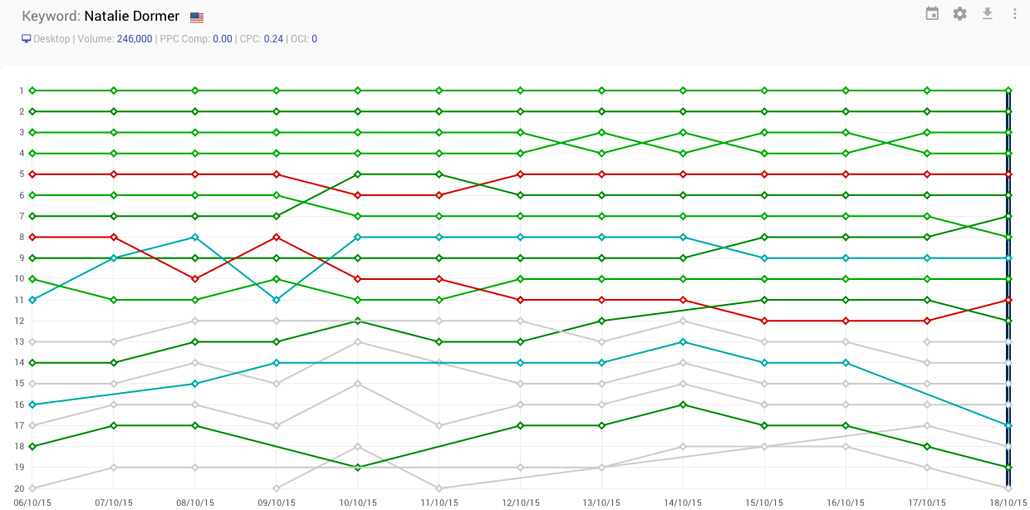
ORM Goggle Mode
The above chart shows how negative and positive web pages move up and down in Google search results for the keyword "Chris Sanfilippo". Now in this case, the "negative" pages are actually just pages that are not related to me, and just an example.
ORM Goggle Mode can be turned on by checking the orange box above the chart view on any keyword report.
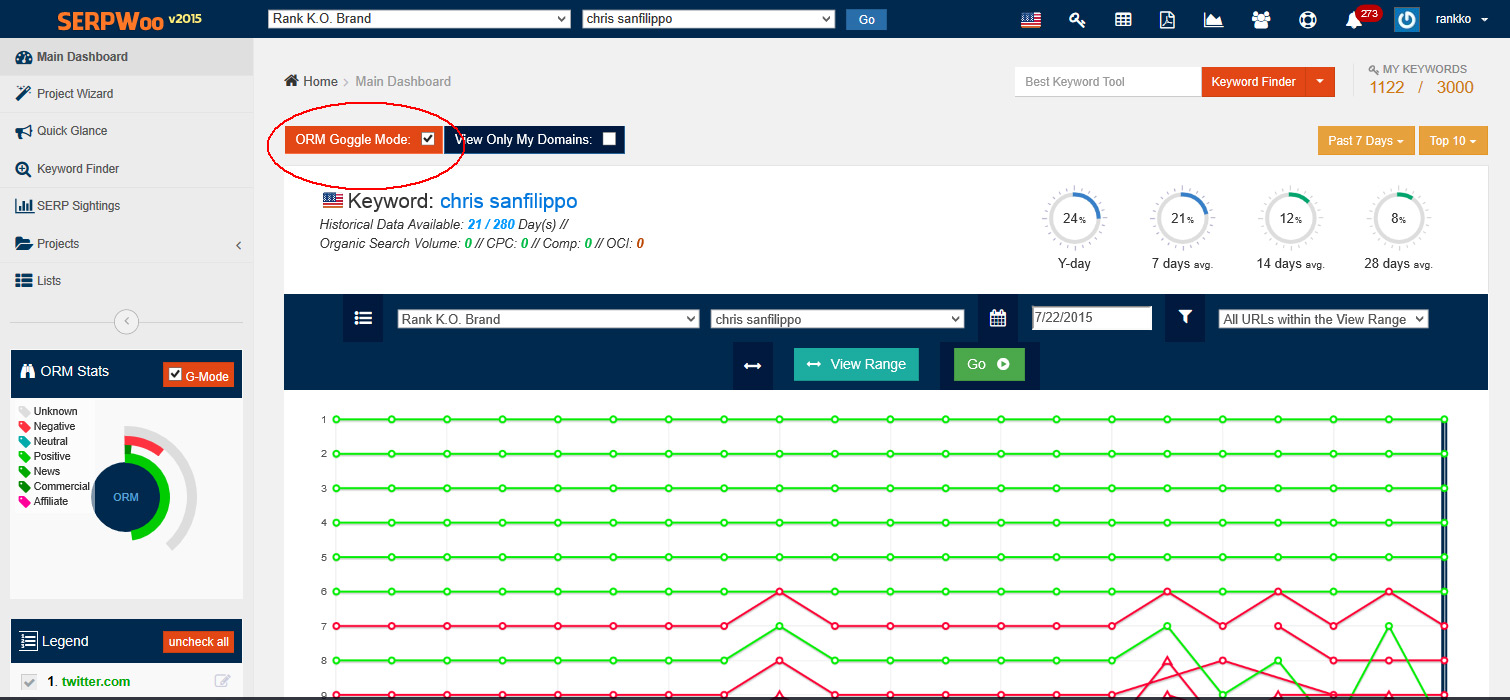
ORM Goggle Mode Checkbox
Webpages and entire domains can be labeled as positive, neutral, negative, as well as several other categories. This can be accomplished right from the legend which is located left of the chart.
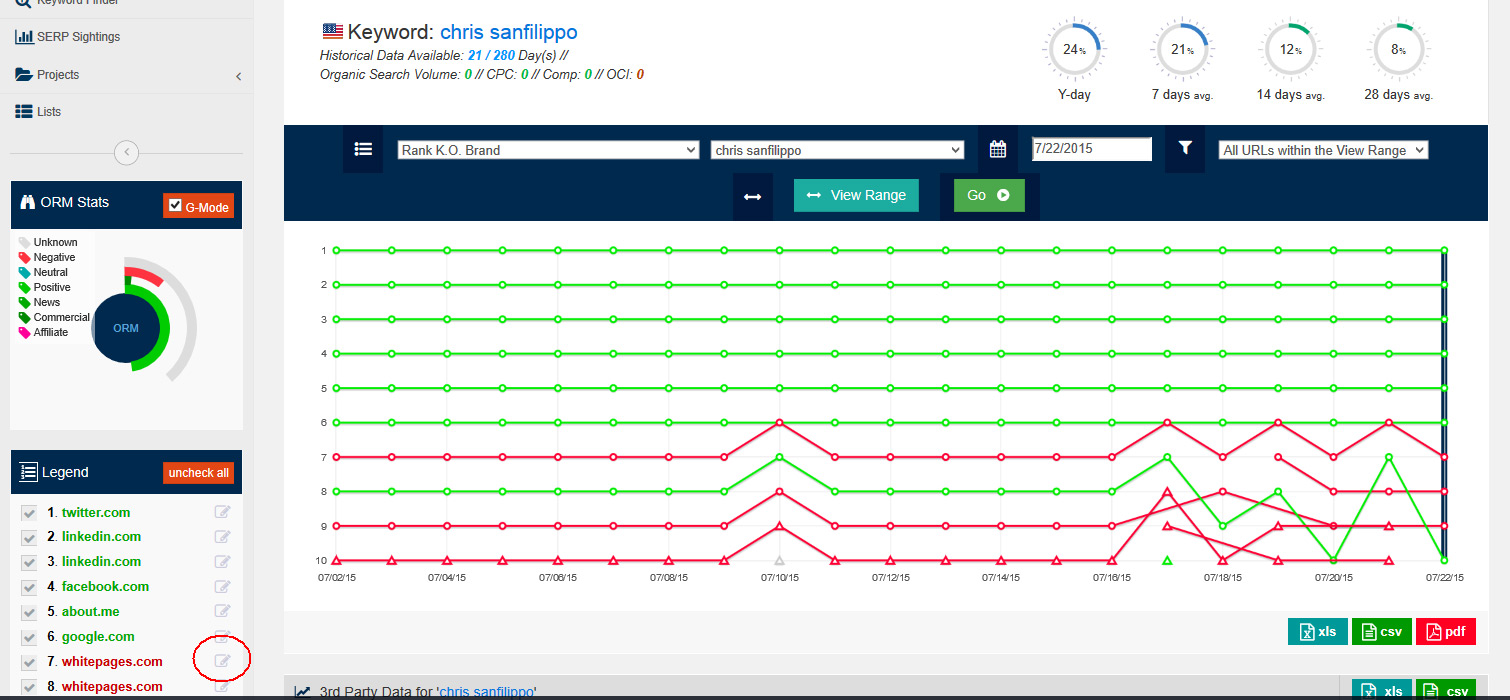
ORM Reporting Example
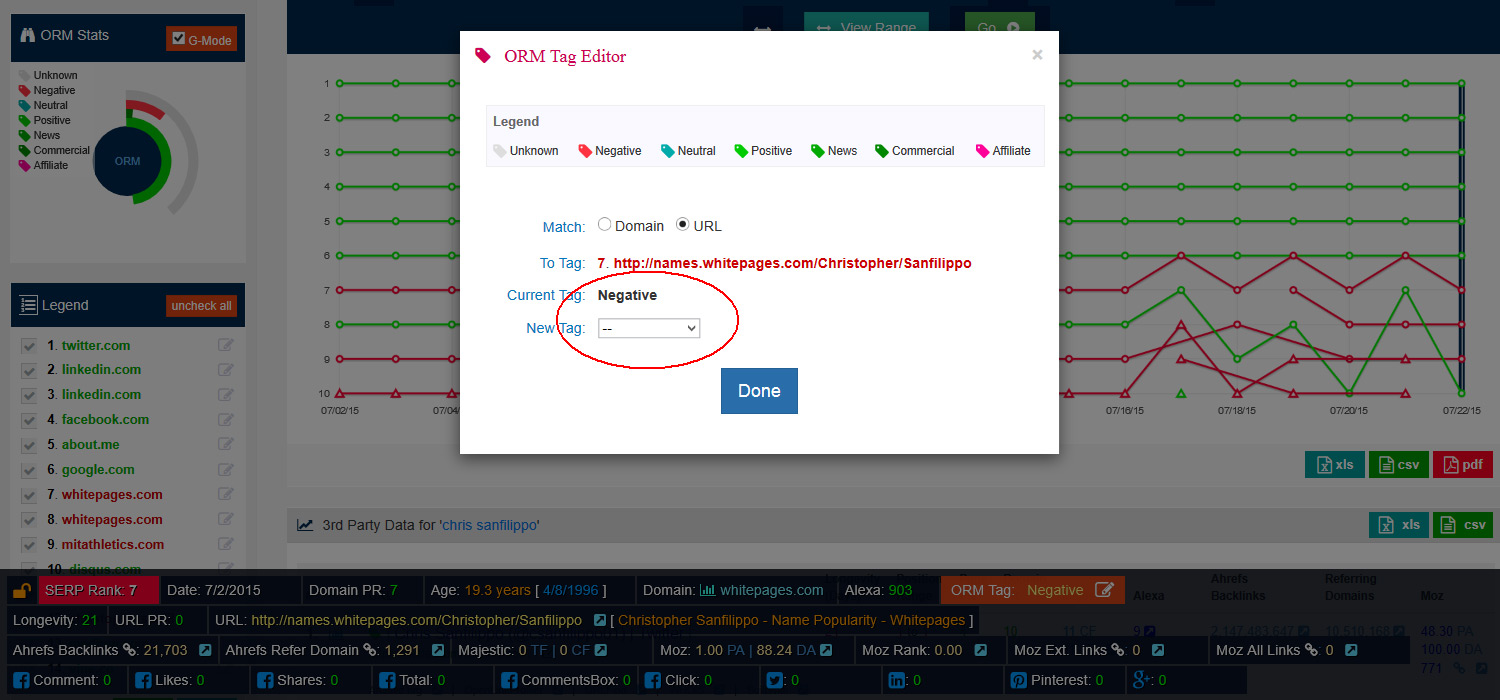
Online Reputation Management Tagging
Once you've labeled a URL or domain, that label will be applied throughout all reports in SERPwoo. This little detail will save analysts a tremendous amount of time.
Once ORM Goggle Mode is enabled and all URLs have been tagged, the chart view will serve as a report that allows us to evaluate a client's reputation at the keyword level. This report acts as the scorecard for reputation management campaigns.
The next report is one that many clients will value. Rather than using the keyword as the starting point for our report, we will use the URL as a starting point, and show the client how a specific URL is performing across all tracked keywords.
This report allows us to answer questions such as:
- How are negative webpages performing this month across my tracked keywords?
- How are earned and owned assets performing across my tracked keywords?
Reputation management is a sensitive practice and many clients want to know how a negative webpage is performing overtime across their tracked keywords. They want to know if it's generally moving up or down in the search results.
On the flip side, they also want to see how the newly created assets are performing. This is valuable data as it allows the analyst to measure the performance of content and promotion efforts for each specific asset. This data essentially allows the analyst to get credit for their work.
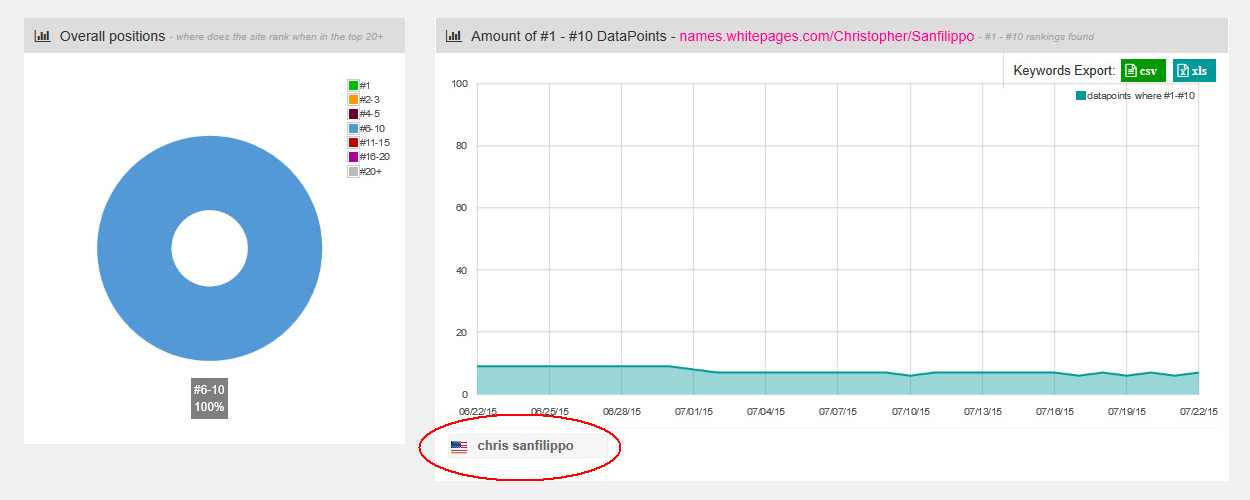
SERP Sightings
SERP Sightings is a feature that provides URL performance data. The chart labeled "Amount of #1 - #10 DataPoints" will reveal how often a URL is ranking in positions 1-10 over time. This is the most important chart within SERP Sightings because it measures the page one presence for a URL across all tracked keywords over time.
This is likely the most underutilized report in SERPWoo.
This report should be used for measuring the page one exposure of negative content, and to measure the page one "stickiness" of newly created assets.
I've made the Simple Monthly ORM Report available as a template which can be downloaded here: http://bit.ly/1LELi9R
The final PDF can be viewed here: http://bit.ly/1SDwGb1
Similar Posts On SERPWoo
- Online Reputation Repair: White Hat SEO Guide
- Push Down Negative Websites Just Like Expensive ORM Professionals
- How I use Serpwoo.com To Manage Online Reputation Clients
- List of Online Reputation Management tactics
